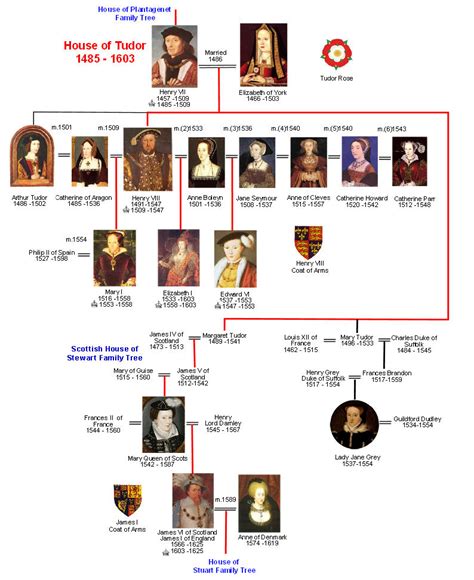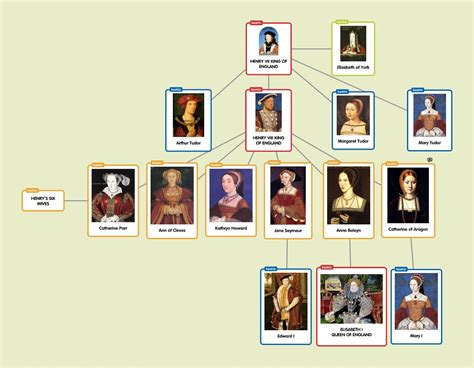british monarchy family tree tudor | henry viii succession tree british monarchy family tree tudor House of Tudor, an English royal dynasty of Welsh origin, which gave five sovereigns to England: Henry VII (reigned 1485–1509); his son, Henry VIII (1509–47); followed by Henry . 探索路易威登 LV Iconic 20mm Reversible Belt: This LV Iconic 20mm reversible belt puts a modern slant on a favorite House style. The ultra-slim profile makes it easy to wear, either threaded through belt loops or at the waist for a defined silhouette. It fastens with the elegant Iconic buckle and features a reversible strap that allows a variety of looks.
0 · tudor family tree with names
1 · tudor family tree diagram
2 · tudor family tree ancestry
3 · tudor descendants today
4 · henry viii succession tree
5 · henry viii descendants family tree
6 · henry viii descendants chart
7 · descendants of king henry vii
By Timothy Baron. Updated September 22, 2017. Eyemaze released "Grow Nano v3" in 2008. It's part of the "Grow" and "Level Up" series. These games present players with four or more buttons. Players must discover the right order to push these buttons. Each of these games has its own theme.

House of Tudor Family Tree from King Henry VII (1485 - 1509) to Queen Elizabeth I (1558 - 1603).British Royal family tree from Alfred the Great to Charles III (849 - present)The House of Tudor was an English and Welsh dynasty that held the throne of England from 1485 to 1603. They descended from the Tudors of Penmynydd, a Welsh noble family, and Catherine of Valois. The Tudor monarchs ruled the Kingdom of England and the Lordship of Ireland (later the Kingdom of Ireland) for 118 years with five monarchs: Henry VII, Henry VIII, Edward VI, Mary I and Elizabeth I
Discover the Tudor royal family tree and explore the Tudor's impact on royal succession. Learn about King Henry VII, Queen Elizabeth I, and more. House of Tudor, an English royal dynasty of Welsh origin, which gave five sovereigns to England: Henry VII (reigned 1485–1509); his son, Henry VIII (1509–47); followed by Henry .The following is a simplified family tree of the English, Scottish, and British monarchs. For more-detailed charts see: • Family tree of English monarchs, from Alfred the Great and Æthelstan to James VI and I;• Family tree of Scottish monarchs, from Kenneth MacAlpin also to James VI and I;
This is the family tree for monarchs of England (and Wales after 1282) from Alfred the Great to Elizabeth I of England. The House of Wessex family tree precedes this family tree and the . His family line connects with King Henry 1 through Gilbert L’Aigle Who drowned with the White Ship along with 2 of his sons, which, King Henry said were his grandsons. The .
An infographic illustrating the genealogy and royal succession of the House of Tudor that held the throne of England and its realms from 1485 to 1603. The five sovereigns (six if Lady Jane Grey is included) of the Tudor dynasty are among the most well-known figures in Royal history. Of Welsh origin, Henry VII succeeded in .British Royal family tree from Alfred the Great to Charles III (849 - present)
tudor family tree with names
Queen Mary I was one of five children born to Henry VIII and her mother Catherine of Aragon, but she was the only one to survive childhood.Mary was born on the 8th December 1542 at the Palace of Placentia in Greenwich. Contrary to the commonly held belief, Henry was very pleased with her birth and presented her proudly to visiting noblemen and ambassadors. The British Royal Family has a long and fascinating history that goes back over a thousand years. From the Anglo-Saxon and Danish monarchs to the current royal family, their lineage has shaped the UK’s culture and politics. The monarchy has seen many changes, but its significance remains strong. Anglo-Saxon and Danish Monarchs (c. 800–1066) TheRoyal House of Stuart Family Tree from King James I (1603 - 1625) to Queen Anne (1702 - 1714). Wikipedia explains that his parents were James III of Scotland and Margaret of Denmark. James IV married Margaret Tudor, which is what put his great-grandson James VI of Scotland in line to become James I of England, succeeding Elizabeth I. That connection to the Tudors is also not shown in this family tree. You may want to expand it.
The House of Windsor is a British royal house, and currently the reigning house of the United Kingdom and the other Commonwealth realms.The royal house's name was inspired by the historic Windsor Castle estate. Since it was founded on 17 July 1917, there have been five British monarchs of the House of Windsor: George V, Edward VIII, George VI, Elizabeth II, and . House of Windsor, the royal house of the United Kingdom, which succeeded the house of Hanover on the death of its last monarch, Queen Victoria, on January 22, 1901. The dynasty includes Edward VII (reigned 1901–10), George V (1910–36), Edward VIII (1936), George VI (1936–52), Elizabeth II (1952–2022), and Charles (from 2022).
The House of Stuart, originally spelled Stewart, was a royal house of Scotland, England, Ireland and later Great Britain.The family name comes from the office of High Steward of Scotland, which had been held by the family progenitor Walter fitz Alan (c. 1150).The name Stewart and variations had become established as a family name by the time of his grandson Walter Stewart.
In this gallery, we look at the history of the last five royal houses of Britain through their family trees. From the Wars of the Roses to the current House of Windsor, we see an evolution from absolute rule to a constitutional monarchy. The branches of these trees bore great fruits of achievement, but with murders, persecutions, and raging civil wars, they have also . READ MORE: The British Royal Family Tree: Tracing the Lineage from Anglo-Saxons to Modern-Day. . A Full Lineage of the House of Tudor. Major Monarchs. The English line of Stuarts began with James I–VI of England and Scotland, and his wife, Anne of Denmark. Their son, King Charles I of England, Scotland, and Ireland continued the Stuart line .Queen Mary, 1867-1953. King Charles's great-grandmother Queen Mary was royal by birth (her great-grandfather was King George III). Despite technically being a princess of the German Duchy of Teck .
House of Tudor, an English royal dynasty of Welsh origin, which gave five sovereigns to England: Henry VII (reigned 1485–1509); his son, Henry VIII (1509–47); followed by Henry VIII’s three children, Edward VI (1547–53), Mary I (1553–58), and Elizabeth I (1558–1603).. The origins of the Tudors can be traced to the 13th century, but the family’s dynastic fortunes were .Royal House of Hanover Family Tree from King George I (1714 - 1727) to Edward VII (1901 - 1910).
Henry Tudor in protective care. Jasper Tudor took Margaret and her son in to his protective care after the birth of Henry. But after her marriage to Henry Stafford a few months later, Henry remained with Jasper and rarely saw his mother from then on. In 1471 when Henry was four, Edward IV won power for the House of York as a result of the Battle of Tewkesbury.The House of Hanover (German: Haus Hannover German pronunciation: [haʊ̯s haˈnoːfɐ]) is a European royal house with roots tracing back to the 17th century. Its members, known as Hanoverians, ruled Hanover, Great Britain, Ireland, and the British Empire at various times during the 17th to 20th centuries. Originating as a cadet branch of the House of Welf in 1635, also .
tudor family tree diagram
House of Tudor Family Tree from King Henry VII (1485 - 1509) to Queen Elizabeth I (1558 - 1603).They descended from the Tudors of Penmynydd, a Welsh noble family, and Catherine of Valois. The Tudor monarchs ruled the Kingdom of England and the Lordship of Ireland (later the Kingdom of Ireland) for 118 years with five monarchs: Henry VII, Henry VIII, Edward VI, Mary I . Discover the Tudor royal family tree and explore the Tudor's impact on royal succession. Learn about King Henry VII, Queen Elizabeth I, and more. House of Tudor, an English royal dynasty of Welsh origin, which gave five sovereigns to England: Henry VII (reigned 1485–1509); his son, Henry VIII (1509–47); followed by Henry VIII’s three children, Edward VI (1547–53), Mary I (1553–58), and Elizabeth I (1558–1603).
Family tree of British monarchs. The following is a simplified family tree of the English, Scottish, and British monarchs. For more-detailed charts see: Family tree of the British royal family from James VI and I to the present.This is the family tree for monarchs of England (and Wales after 1282) from Alfred the Great to Elizabeth I of England. The House of Wessex family tree precedes this family tree and the family tree of the British royal family follows it. His family line connects with King Henry 1 through Gilbert L’Aigle Who drowned with the White Ship along with 2 of his sons, which, King Henry said were his grandsons. The Normandy Dynasty ended & the Plantagenet Dynasty began.

An infographic illustrating the genealogy and royal succession of the House of Tudor that held the throne of England and its realms from 1485 to 1603. The five sovereigns (six if Lady Jane Grey is included) of the Tudor dynasty are among the most well-known figures in Royal history. Of Welsh origin, Henry VII succeeded in ending the Wars of the Roses between the houses of Lancaster and York to found the highly successful Tudor house.
cartier santos pre owned mens
cartier santos supreme
Discover Louis Vuitton LV Iconic 20mm Reversible Belt: Featured in Nicolas Ghesquière’s Cruise 2024 show, the LV Iconic 20mm Reversible Belt updates the classic Monogram signature with a brighter, more contemporary color palette. Monogram Dune canvas is paired with sumptuous semi-aged natural cowhide on the reverse side, accented by a .
british monarchy family tree tudor|henry viii succession tree

























